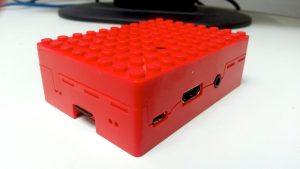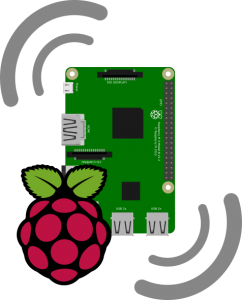Over the last two years talking to people, a recurrent theme rolling out the Mazizone across Creeknet is the level of knowledge needed to run and manage it. This starts with two questions that people ask us:
What is it?

Its a low power Raspberry Pi server. Powered by just a mobile charger or a power bank, it can provide a ‘wifi hotspot’ for devices to connect to and access all sorts of services, such as a local cloud storage (Owncloud/Nextcloud), a collaborative text editor for enabling multiple people in creating a document together (Etherpad), and a localised WordPress site. There are more, but too many choices can be a bad thing sometimes. Connecting to an internet router can be done with a network cable or using wifi; giving people an option to get to the internet as well as use the ‘zone services. Otherwise the device can be a standalone device offering services for a building or space without needing to be online.
Why use it?
If no internet access is available, or access is not possible, then it is a great tool to have for a meeting to help with organisational duties. There are other options too, such as adding a camera to make a photo booth, or creating an audio archive of interviews. If Creeknet participants are still interested in the device at this point, then a technical person to make the magic happen is needed it seems. This is a problem, as the people we talk to are not that technical. We are the technical ones to create these things to make things happen. A real problem for a Do It Yourself project.
 HOW and WHEN?
HOW and WHEN?
These questions are harder to respond to, even making up some sort of rhetoric for the purpose of this post, but WHERE is answered in the potential of a very portable device. Back in Kokkinopilos, the Mazizone was really useful in a schoolhouse with a patchy internet connection to create a workspace for a project team; with that said, it was invisible and needed to be constantly tended to in order to fulfill a potential for usefulness. This prompted the response by Katalin the Unmonk to turn the situation inside out and create a room that was a ‘pre-tech’ approach to using the Mazizone, gathering people’s snippets of knowledge and transposing them into a scrapbook. This was a great example of ‘pretotyping‘, a term I’ve brought to the project as a means of ascertaining what is actually needed.
Lets make a manual.
The project is now in the3rd and final year, and we are now at the stage when we need to be able to give more confidence to potential Mazizone owners and actually try to get it to be used. From my experiences in Olympus, I felt that a printed booklet would be the best option and opportunity for people not overly technical, and if a manual can be created to break down the complexities of setting up and owning the device then we are moving the engagement along without having to be the holders of knowledge. Well, it will likely be a couple or three books, and we will still seen as touchstones of hidden detail, but the game is afoot nonetheless in attempting to take the Mazizone to be (cough) accessible to many.
A prepacked toolkit or a configurator for a toolkit?
The Mazi partners have talked about a ‘toolkit’ approach, but has ended up with some definite ideas about what is required, prompted by feature requests – I wonder if a complete pretotyping approach were to be taken then there would be a lot more Mazi rooms I reckon. James has occasionally reminded me of his idea to make a ‘configurator’, a (possibly reflective) tool to assess needs and wants in a Mazizone appropriate to those options. Quite a big job. A decision tree or a story in Twine may be options for this. Ideally it would be on the first run of the Mazizone, if you asked us.
What’s been done so far?
Drafts have started on making an outline of what is needed for a Mazizone, YT has been steadily working through the options to set up the apps. The job has begun. If you’re interested in the project, visit http://www.mazizone.eu/ for an overview of the project and what partners across Europe are doing.
